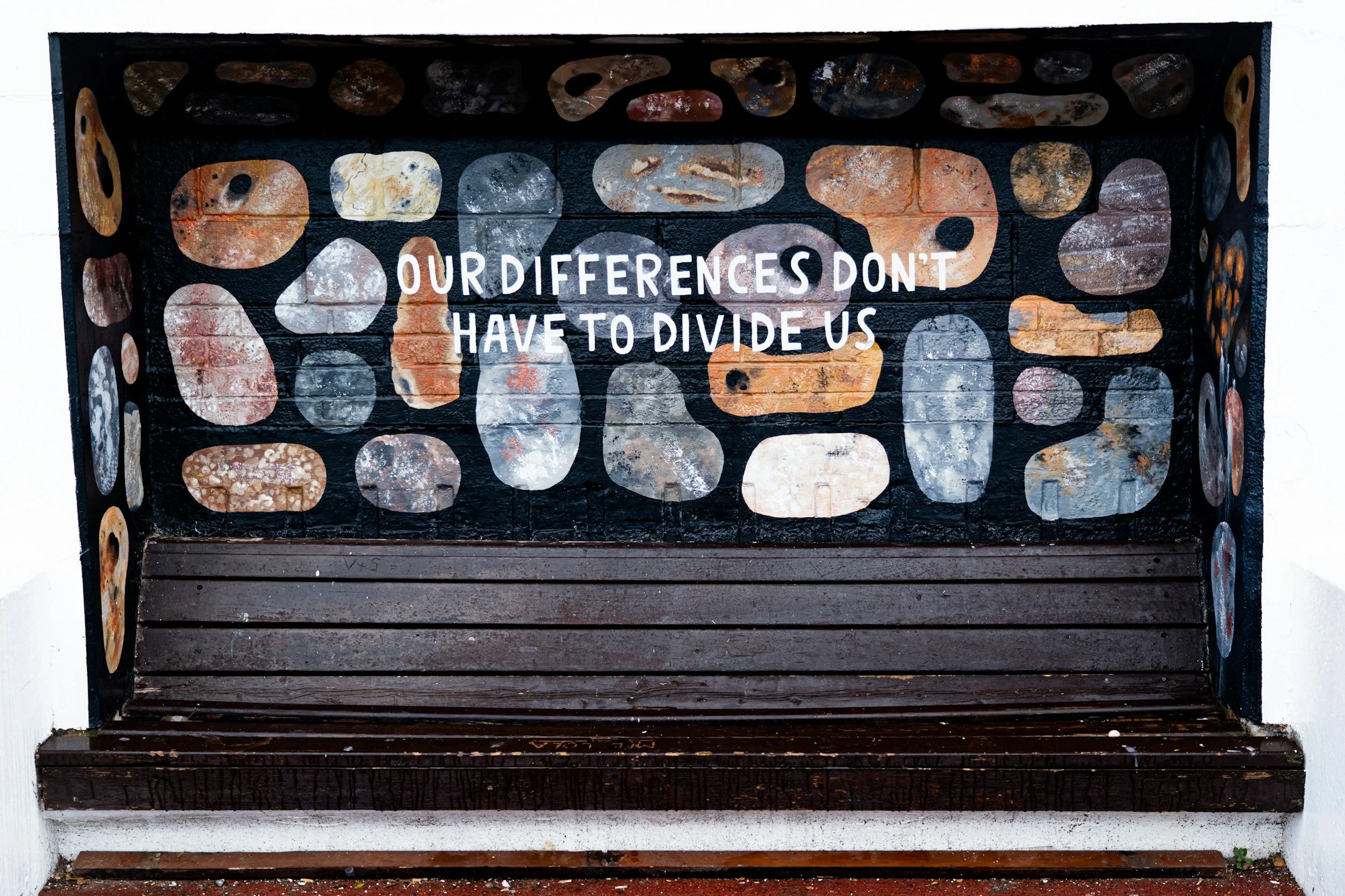if we want to live in a world where everyone belongs, we must build it. Together.
The current climate of political polarization and manufactured outrage is not just exhausting, it’s dangerous. Research indicates that communities experiencing division and marginalization exhibit specific characteristics like higher rates of mental illness, gun violence, chronic disease, and distrust in institutions. The loneliness epidemic, recently declared a public health crisis, is deeply linked to environments where people feel unseen or unwelcome.
When people don’t feel like they belong, they disengage. From voting. From school. From work. From community life. And that disconnection creates a vacuum, one easily filled by extremism, misinformation, and isolation.
We see this in the heartbreaking stories that make the headlines , from acts of mass violence to targeted hate crimes. But we also see it in the quiet despair of those who no longer feel they have a place in the world around them.
The toll of division
When Division Turns Deadly: Why We Must Rebuild Belonging Now
This environment of hate and hostility doesn’t just destroy communities, it erodes minds. Americans are reporting record-high levels of stress and anxiety tied to political division, systemic injustice, and social alienation. According to the American Psychological Association, more than 70% of adults say the future of the nation is a significant source of stress. These numbers climb even higher for communities of color, immigrants, and LGBTQ+ individuals.
Beyond stress, the mental health system is failing to meet people where they are. Depression and trauma go untreated, particularly in communities facing disinvestment, generational grief, and racial injustice. We’re not just divided; we’re disconnected, unhealthy, and unsupported. And it's costing us lives.
The consequences go beyond politics. They seep into mental health, community well‑being, and public safety.
Conversations That Move Us Toward Unity
Last month, we had the extraordinary privilege of interviewing a group of leaders, storytellers, scholars, and change makers—each bringing a distinct voice to our collective exploration of unity, belonging, and environments that organically foster human connection.
Politics: A Force for Unity or Division in the Fight Against Racism?
Politics: A Force for Unity or Division in the Fight Against Racism?
sports - uniting communities across racial divides
For many young athletes from small towns, stepping onto a college or pro team for the first time is also a first encounter with teammates from different backgrounds, races, or cultures. While the transition can seem daunting, sports has a unique way of dissolving boundaries and building unity among people who might otherwise never connect.
Building better
In 2024, let’s refocus our New Year’s Resolutions and make them about working together to create positive change, fostering environments where everyone feels valued, respected, and included. We can build a future that celebrates the richness of our collective human experience.
teaching diversity at a young age
In today's interconnected and rapidly changing world, embracing diversity has become essential to fostering a compassionate, understanding, and harmonious society. To achieve this, beginning diversity education at a young age is crucial. This blog will explore the significance of teaching diversity during specific stages of child development and how it lays the foundation for a more inclusive and empathetic future.











